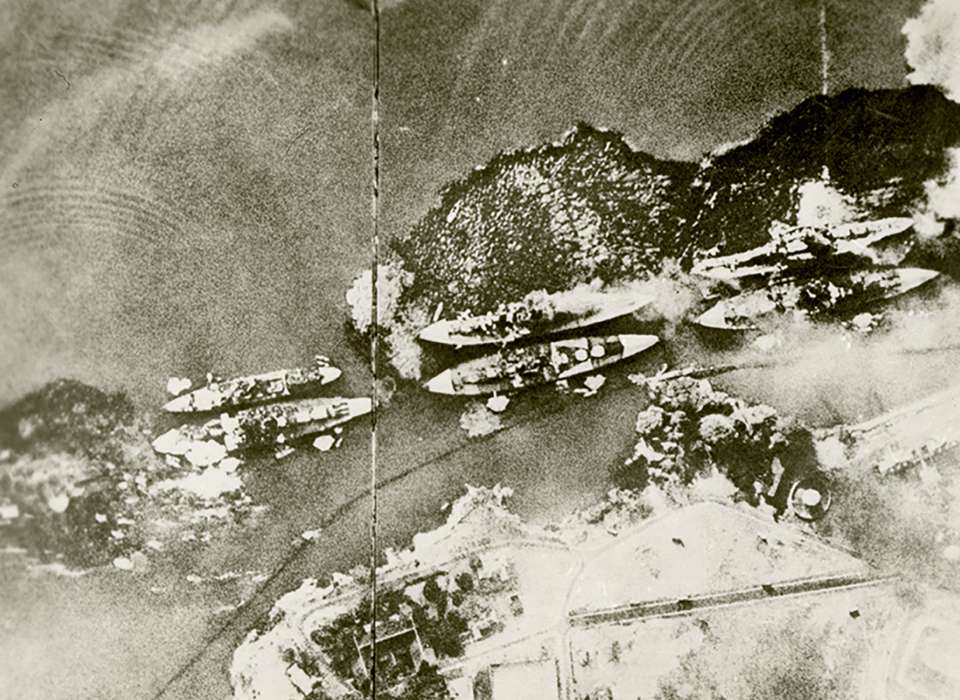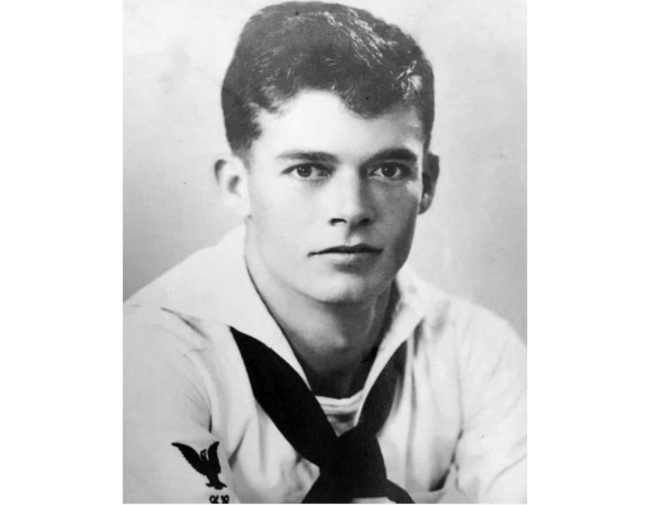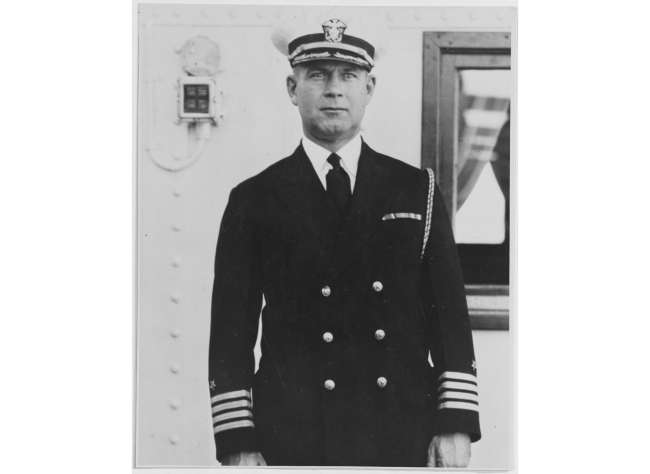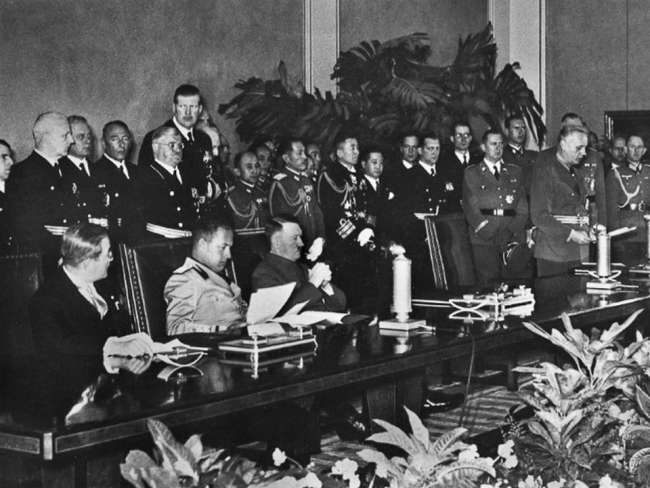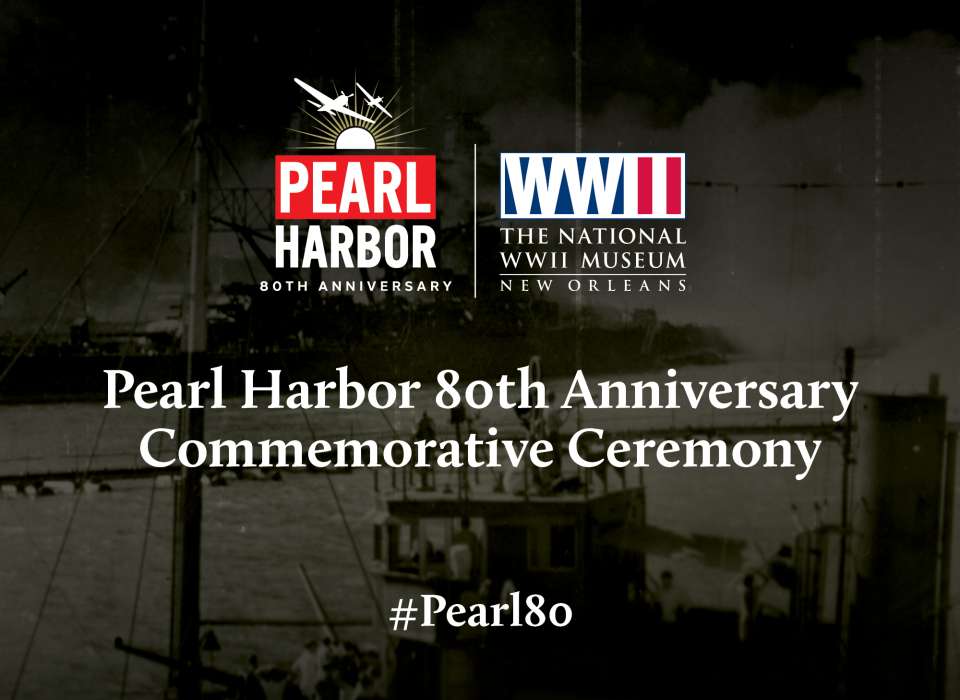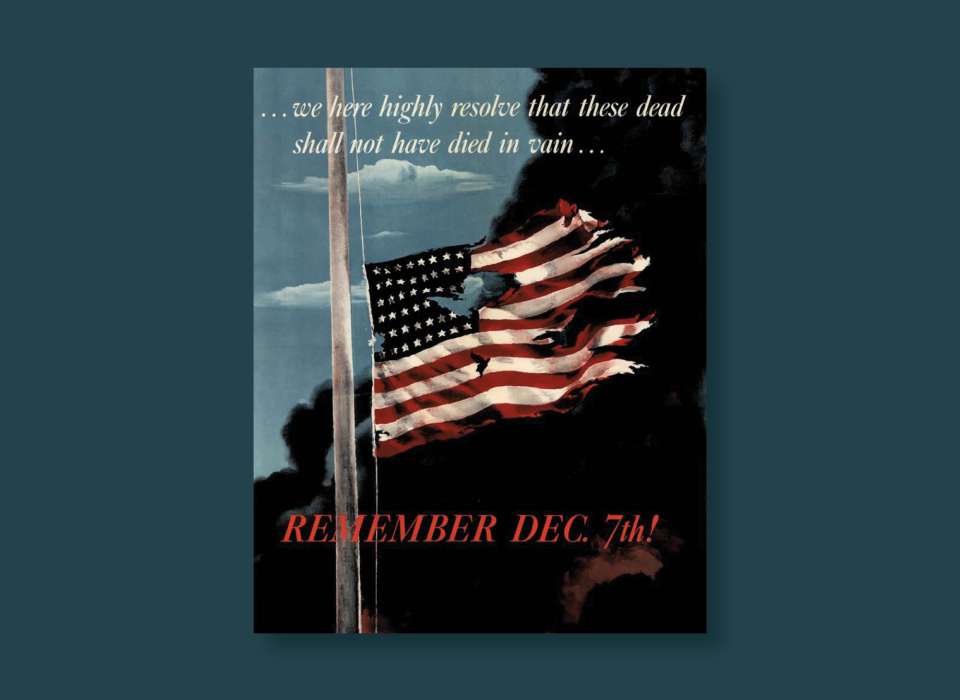Top Image: Aerial view from a Japanese aircraft over Pearl Harbor, December 7, 1941. Image from the Collection of The National WWII Museum, Gift of Julian Dean, 2010.523.038.
Histories of the Pearl Harbor attack properly devote much attention to intelligence warnings about the attack—or their absence. But this literature customarily underplays a subset of three immediate tactical warnings of the attack on the morning of December 7, 1941. Why they did not at least ready American forces to meet the immediate attack, and thus reduce casualties and damage, is another story linked to other major issues.
Before we get to the specific tactical warnings, a word is necessary on the status of American forces in Hawaii. That morning the key principle later to guide American WWII conduct was conspicuously violated: unity of command. Lt. Gen. Walter C. Short commanded Army forces in Hawaii. His major subordinate units consisted of Army Air Force elements comprised of some 234 aircraft, including 152 fighters. The other major component consisted of ground forces, then organized primarily as the 24th and 25th Infantry Divisions. Short also commanded anti-aircraft battalions. These guarded not only army facilities, but also Pearl Harbor. Technically the explicit mission of guarding the Pacific Fleet when it was at Pearl Harbor rested not with the Navy, but with the Army with its fighter aircraft and anti-aircraft guns.
Short’s opposite was Admiral Husband E. Kimmel, commander of the Pacific Fleet. Neither Short nor Kimmel held overall command. The division spawned two critical factors governing American readiness in Hawaii that morning. First, the Navy, thanks to supersecret communications intelligence, had by far the best picture of Japanese capabilities, including Japanese carrier aviation. The Navy had not broken the main Japanese fleet code, but it was monitoring Japanese naval radio communications, which provided vital information on the whereabouts and force structure of the Imperial Navy.
This revealed the location of many fleet units, particularly the massive assembly of naval might to support Japan’s opening moves in the Far East. But radio communications intelligence “lost” the location of Japanese carriers after November 17 (the Japanese Pearl Harbor strike force sailed November 25, Japanese time). Not only did Kimmel not know where the Japanese carriers were, for security reasons he did not inform Short that their location was unknown. Thus, when Washington issued “War Warning” messages separately to Short and Kimmel at the end of November, Short replied that he was only preparing against the danger of internal revolt or subversion, not external attack. Washington failed to challenge his readiness. Those anti-aircraft guns to protect Pearl Harbor were not deployed or had their ammunition locked up. No fighters were ready to engage a Japanese attack.
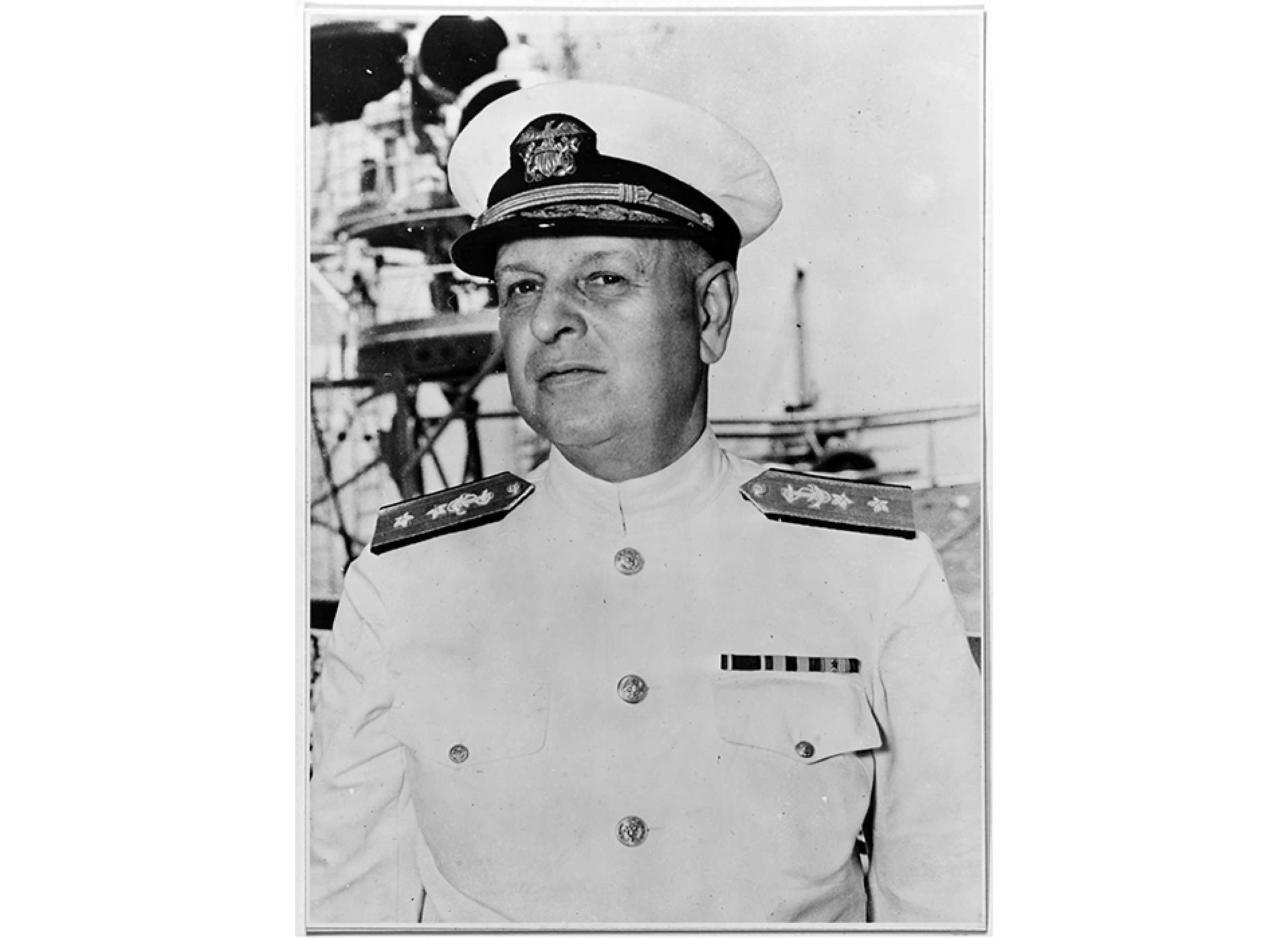
Rear Admiral Husband E. Kimmel in 1939 as Commander, Cruiser Division Seven. Image courtesy of the Naval History and Heritage Command, NH 50266.
The second huge deficiency in readiness was the failure to create an effective air information (or control) center. Washington had provided a radar network. But to make the center effective, it needed close cooperation of the Army and Navy to distinguish hostile from friendly aircraft picked up by radar. Kimmel’s headquarters failed to provide the essential naval liaison staff to account for naval aircraft and make the center effective. On top of this, Short only authorized limited operating hours for the radar network and the center.
Now we come to the three tactical warnings.
First, the Japanese launched two cruiser float scout planes ahead of the main strike to determine the readiness of American defenses. Radar duly picked up these two unidentified aircraft about 6:45 a.m. The attack started about 7:55 a.m. There was no way for the controllers to determine these aircraft were Japanese. Further, it is extremely unlikely that a mere two unidentified aircraft would have triggered a major alarm even if the controllers had been at a higher state of alert.
Second, guarding the entrance to Pearl Harbor was the destroyer USS Ward (DD-139). She was one of the “Four Piper” destroyers (so nicknamed based on their four funnels) mass produced for World War I. After a long rest in reserve from 1921, Ward was placed back in full commission in January 1941. Most of her crew came from a naval reserve unit in the Minneapolis/St. Paul, Minnesota area. Her skipper was Lieutenant William W. Outerbridge. Not only was this his first ship command, he assumed command on December 5 and received a briefing on his sentry mission guarding the harbor entrance. He set to sea in the Ward the very next day.
About 3:20 a.m., December 7, minesweeper USS Condor (AMc-14) approaching the harbor entrance reported sighting a periscope to Ward. This was one of the five 46-ton Japanese “midget” submarines tasked to penetrate the harbor and attack battleships. After a fruitless search, the contact was dismissed as bogus. Outerbridge went back to sleep in his sea cabin.
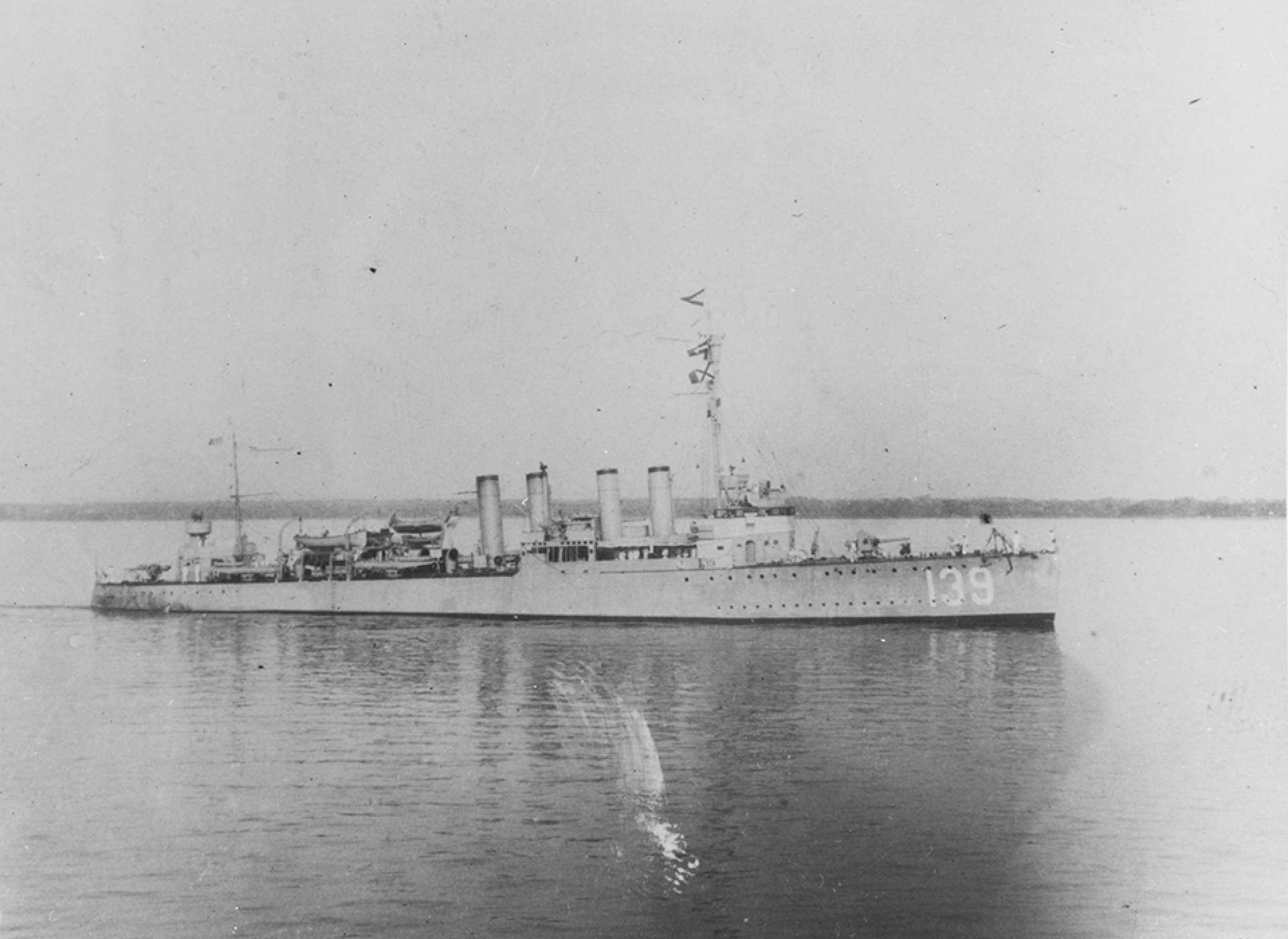
USS Ward in 1919. Image courtesy of the Naval History and Heritage Command, NH 63240.
At 6:30 a.m., alert lookouts on stores ship USS Antares (AKS-3) approaching the Pearl Harbor entrance sighted a small submarine conning tower. She alerted watchdog Ward. The phone rang by Outerbridge’s bunk. The officer of the deck barked, “Captain, come on the bridge.” Outerbridge’s initial reaction was to administer a lesson in naval protocol that junior officers do not order the captain to do anything. But the officer of the deck repeated, “Captain, come on the bridge.”
Outerbridge immediately sensed the urgency in the voice and rocketed to the bridge. Just seven minutes after Antares’ signal, two shots rang out from Ward’s four-inch guns. The second shot penetrated the submarine at the base of the conning tower. The Ward followed up with a depth charge pattern. The submarine sank, though it was located decades later with the shell hole visible at the base of the conning tower.
Ward broadcast a startling report:
“We Have Attacked, Fired Upon and Dropped Depth Charges on a Submarine Operating in the Defensive Sea Area.”
Elderly Ward, her reservist crew, and her neophyte skipper thus concluded the only near flawless American performance of the day. But when the flash reached the duty officer at Pacific Fleet headquarters, he chose to seek verification of the report rather than sound a general alarm.
Third, at the best and northernmost radar site at Opana on Oahu, two very junior enlisted men, Joseph L. Lockhart and George E. Elliot, were about to shut off their set on schedule at 7:00 a.m. when at 7:02 a.m. they saw by far the most sizable return echo they had ever observed: the American radio waves etching a startling, broad, vertical spike on the Opana oscilloscope rebounding from some of the 183 aircraft of the first wave of Japanese attackers. The perplexed pair reported about 7:15 a.m. to the Air Information Center at Fort Shafter a major flight of aircraft to the north, now about 88 miles distant.
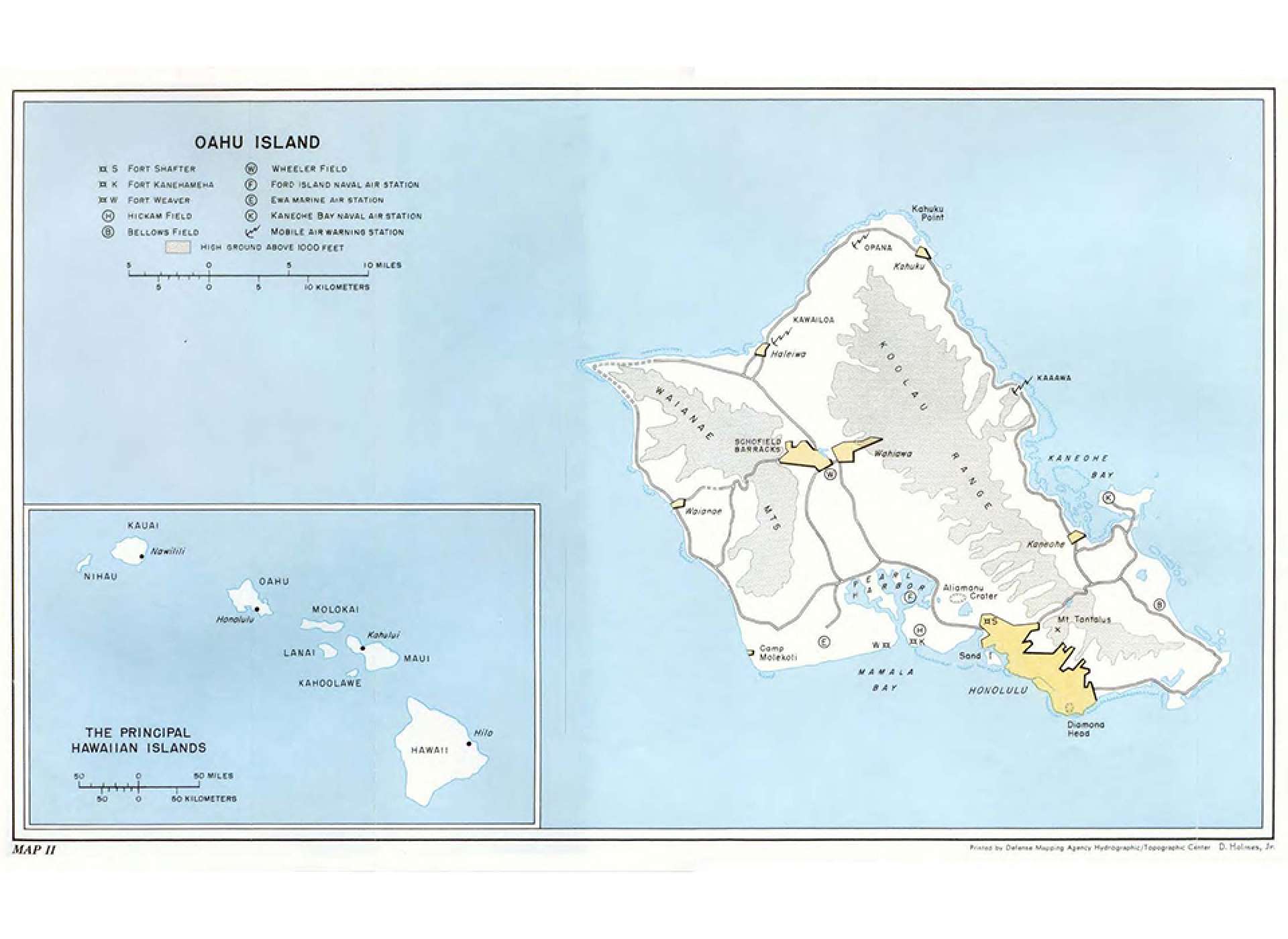
This map of Oahu shows the various military installations on the island as of December 7, 1941. Fort Shafter is at the bottom of the island, in the yellow area. Map from United States Army in World War II: The Western Hemisphere, Guarding the United States and its Outposts.
Only two men manned the center. The switchboard operator relayed the call to his superior, Lt. Kermit Tyler. But Tyler was not the regular controller and was merely present for training. As Tyler listened to the report, he recalled that a flight of B-17s was due in from the West Coast that morning. The bearing seemed approximately correct for the flight (by coincidence the two tracks were in fact close). During their conversation, Tyler failed to explain that the flight comprised only about a dozen aircraft and the privates failed to volunteer that the echo signified at least 50 aircraft. Tyler took no action.
The Japanese thus volunteered three potential tactical warnings of the coming onslaught. Even had an effective Air Information Center been operating, it is probably dubious that radar contact around 6:45 a.m. with the two float reconnaissance planes would have prompted a dramatic reaction. The detection of the massive first wave about 40 minutes before the first bombs fell, however, should have triggered a full alarm by at least 20 minutes before the attack. Since it only required about eight to 10 minutes to get battleships to general quarters with all watertight enclosures secured at sea, and less time for smaller vessels, even doubling that time for the less prepared situation that morning in Pearl Harbor, the attack still should have found the ship defenders alert and ready.
Army anti-aircraft batteries probably would still have been mobilizing, as likely would have been defending fighters. Ward’s message describing her encounter with a submarine about five minutes after the report of a massive radar contact at a minimum should have reinforced the urgency of the reaction, though alternatively it could have started a full alert through the naval command chain. The inability of the Army or Navy commands to exploit these tactical warnings remains the most damning charge against Short and Kimmel, who otherwise were much sinned against.
Richard B. Frank
Richard B. Frank is an internationally renowned expert on the Pacific war and a guest contributor of the Museum for articles and "To the Best of My Ability" podcast.
Cite this article:
MLA Citation:
APA Citation:
Chicago Style Citation:
